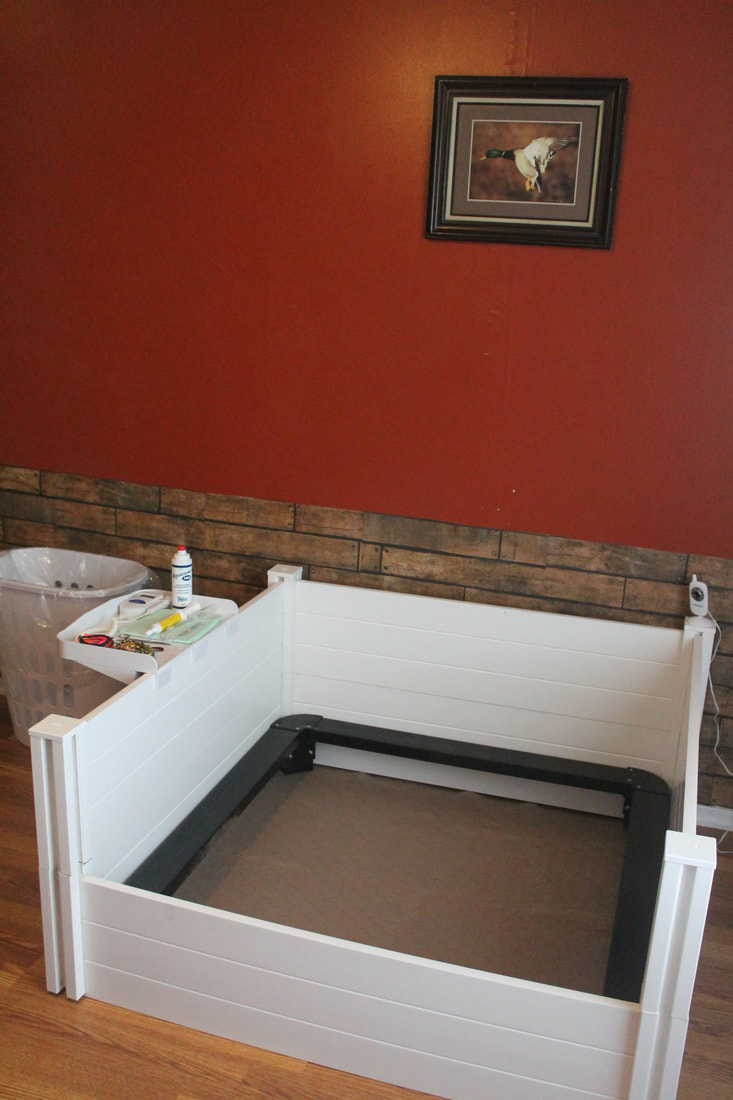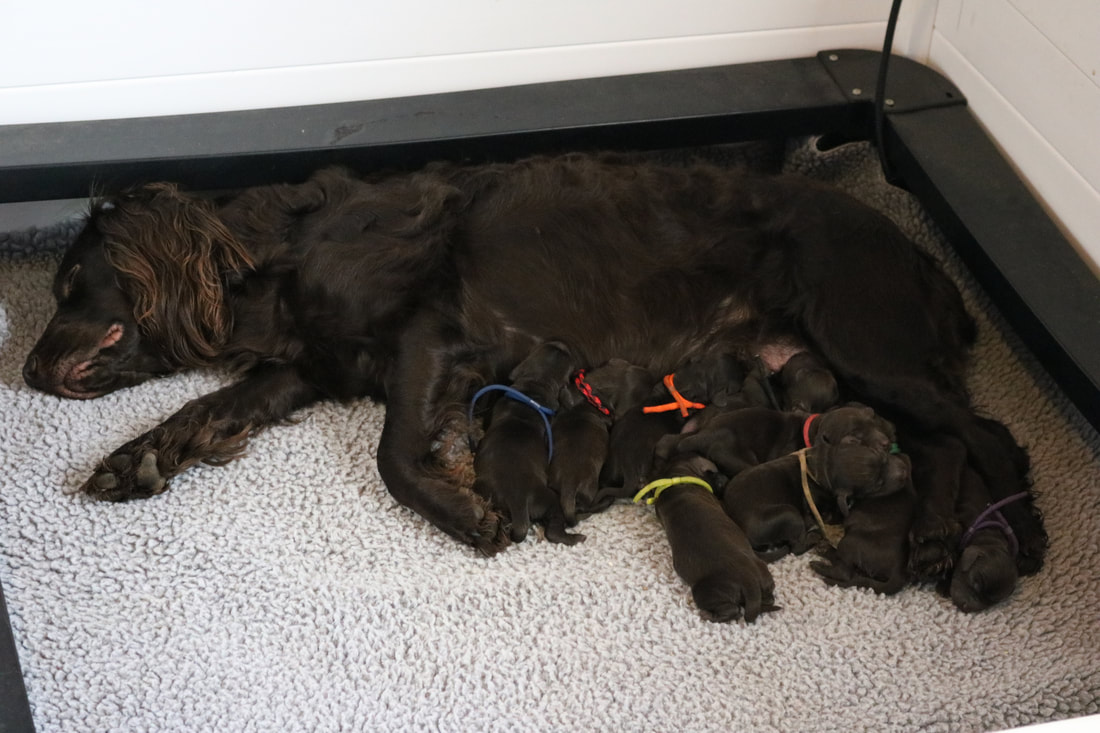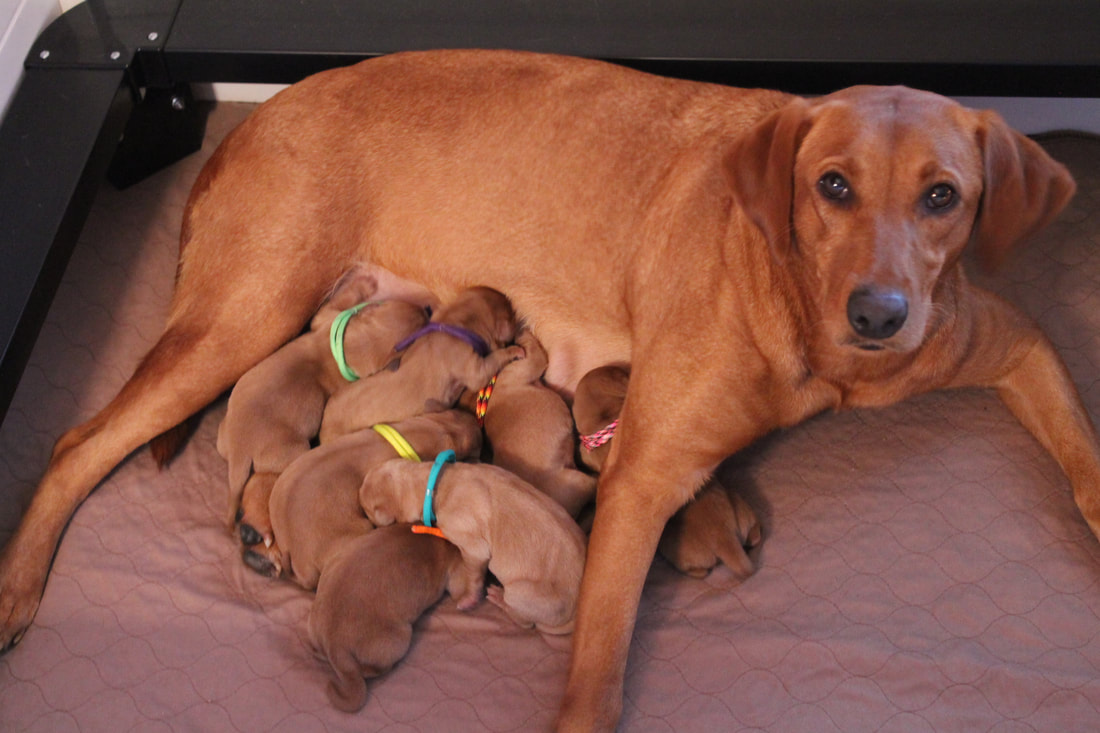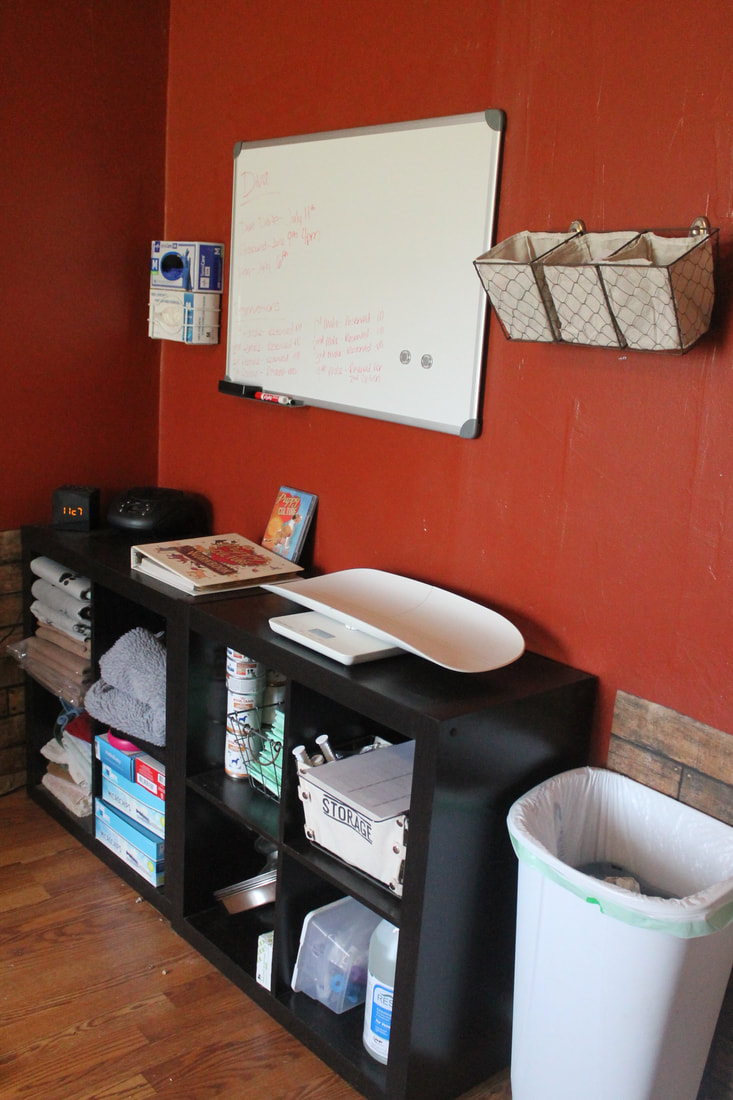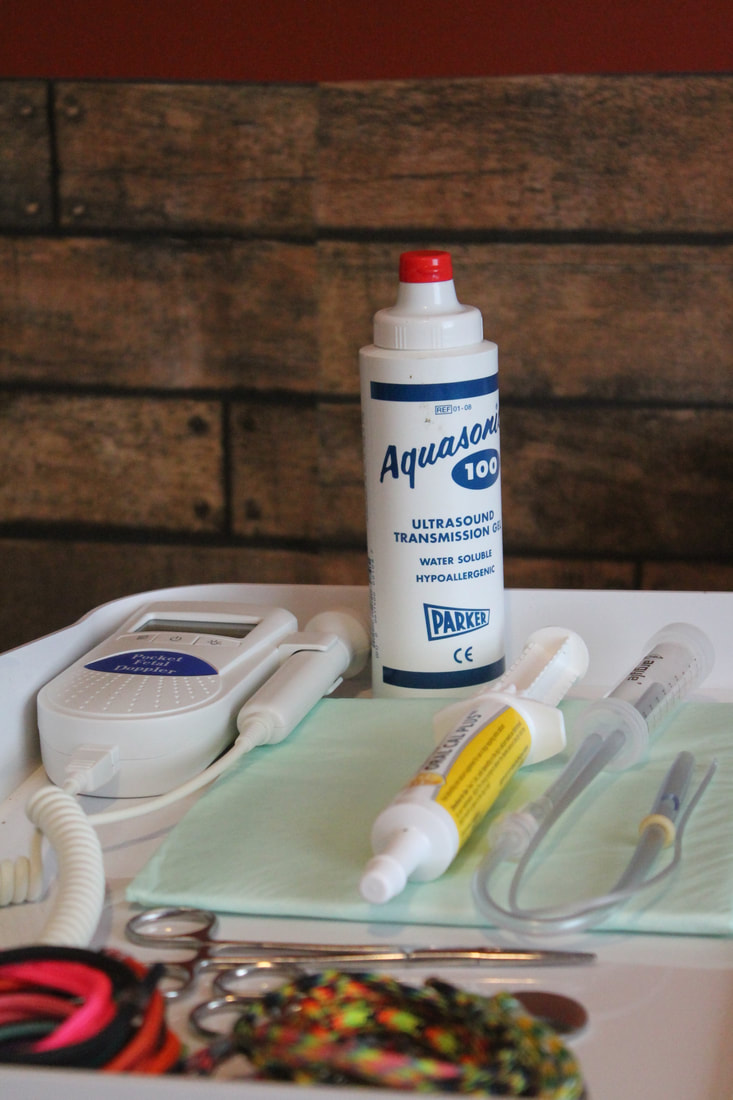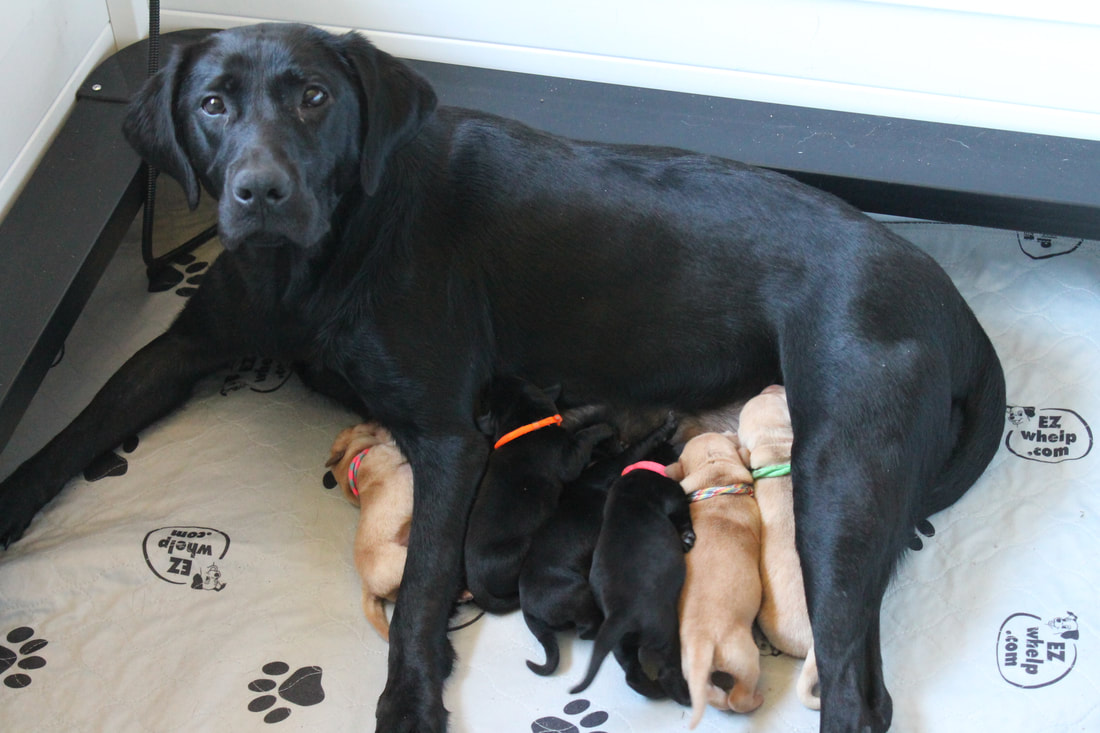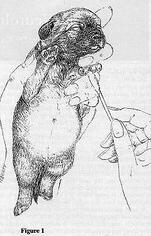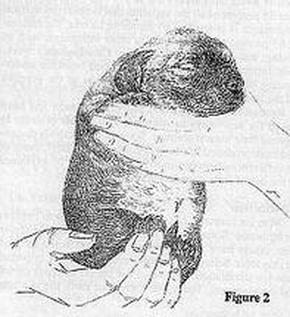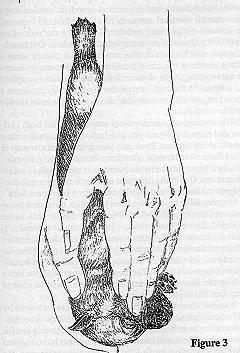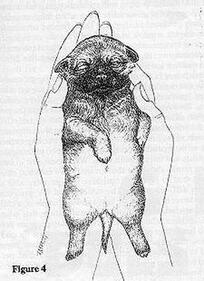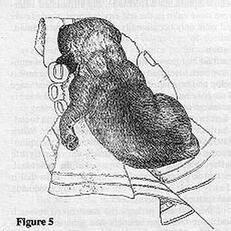Triple Creek Kennel
Puppies are whelped and raised in our home where we can actively participate in the birth and growth of our puppies. We take pride in being there for our litters from the very beginning. We are avid participants in Avidog and Puppy Culture programs, which aid in great structure and fundamentals for puppies. Our puppies are handled from the start, as newborns and are very well socialized. Between days 3-16 puppies will receive early neurological stimulation (called ENS or Biosensor) followed by early scent introduction (ESI). Because of the early interaction, our puppies are well prepared for whatever direction their new family decides to take them. We go to great lengths so that our pups are properly socialized and are raised in a safe, stimulating environment. Our puppies are teachable, trainable, companions as well as energetic, driven, focused, hunting partners.
A good breeding begins with careful planning..
Responsible breeding requires a lot of planning, skill and experience. It’s not nearly as simple as pairing two physically healthy dogs together and hoping for the best. Our breedings are planned months to years in advance and each litter is bred with a common goal. Dams and Sires are studied and researched to insure we start with and continue with quality, healthy lines. We do not breed solely based on color, titles, pedigree or just being a healthy dog. While health testing is a critical and important aspect of each breeding program, it is only one of many factors that we take into account. Great looks as well as desirable traits are always considered. No dog is perfect and we try to recognize those imperfections and make continued improvements with each litter. We hold ourselves to a standard when selecting outside studs for our females. We value the asset of breeding to only proven, health tested, HRCH/MH or higher titled studs.
Often our litters are completely or partially sold prior to the litter being born. An approved puppy application, a deposit and completed deposit agreement will hold your place in a litter. We will make every effort to accommodate your preferences, but we will ensure the pups are placed on their personality, drive, energy level and future purpose. We want everyone to be happy with their family member.
Often our litters are completely or partially sold prior to the litter being born. An approved puppy application, a deposit and completed deposit agreement will hold your place in a litter. We will make every effort to accommodate your preferences, but we will ensure the pups are placed on their personality, drive, energy level and future purpose. We want everyone to be happy with their family member.
Early Neurological Stimulation
The U.S. Military in their canine program developed a method that still serves as a guide to what works. In an effort to improve the performance of dogs used for military purposes, a program called "Bio Sensor" was developed. Later, it became known to the public as the "Super Dog" Program. Based on years of research, the military learned that early neurological stimulation exercises could have important and lasting effects. Their studies confirmed that there are specific time periods early in life when neurological stimulation has optimum results. The first period involves a window of time that begins at the third day of life and lasts until the sixteenth day. It is believed that because this interval of time is a period of rapid neurological growth and development, and therefore is of great importance to the individual.
The "Bio Sensor" program was also concerned with early neurological stimulation in order to give the dog a superior advantage. Its development utilized six exercises which were designed to stimulate the neurological system. Each workout involved handling puppies once each day. The workouts required handling them one at a time while performing a series of five exercises. Listed in order of preference, the handler starts with one pup and stimulates it using each of the five exercises. The handler completes the series from beginning to end before starting with the next pup. These 5 painless and simple exercises are done to prepare our pups for their life's journey. We will continue to do these exercises with our pups because we see the benefits and know it helps them grow into lovable canine companions.
More information can be found here - https://breedingbetterdogs.com/article/early-neurological-stimulation
The handling of each pup once per day involves the following exercises:
The "Bio Sensor" program was also concerned with early neurological stimulation in order to give the dog a superior advantage. Its development utilized six exercises which were designed to stimulate the neurological system. Each workout involved handling puppies once each day. The workouts required handling them one at a time while performing a series of five exercises. Listed in order of preference, the handler starts with one pup and stimulates it using each of the five exercises. The handler completes the series from beginning to end before starting with the next pup. These 5 painless and simple exercises are done to prepare our pups for their life's journey. We will continue to do these exercises with our pups because we see the benefits and know it helps them grow into lovable canine companions.
More information can be found here - https://breedingbetterdogs.com/article/early-neurological-stimulation
The handling of each pup once per day involves the following exercises:
|
Tactile Stimulation
holding the pup in one hand, the handler gently stimulates (tickles) the pup between the toes on any one foot using a Q-tip. It is not necessary to see that the pup is feeling the tickle. Time of stimulation 3 - 5 seconds. (Figure 1) |
Head Held Erect
using both hands, the pup is held perpendicular to the ground, (straight up), so that its head is directly above its tail. This is an upwards position. Time of stimulation 3 - 5 seconds. (Figure 2) |
Head Pointed Down
holding the pup firmly with both hands the head is reversed and is pointed downward so that it is pointing towards the ground. Time of stimulation 3 - 5 seconds. (Figure 3) |
Supine position
hold the pup so that its back is resting in the palm of both hands with its muzzle facing the ceiling. The pup while on its back is allowed to sleep. Time of stimulation 3-5 seconds. (Figure 4) |
Thermal Stimulation
use a damp towel that has been cooled in a refrigerator for at least five minutes. Place the pup on the towel, feet down. Do not restrain it from moving. Time of stimulation 3-5 seconds. (Figure 5) |
Benefits of Stimulation
Five benefits have been observed in canines that were exposed to the Bio Sensor stimulation exercises.
The benefits noted were:
The benefits noted were:
- Improved Cardiovascular Performance
- Stronger Heart Beats
- Stronger Adrenal Glands
- Greater Tolerance to Stress
- Greater Resistance to Disease
Early Scent Introduction
Early scent introduction (ESI) is a training program for puppies designed to enhance their ability to identify, and react to, specific scents. Each day, the trainer introduces a strong scent to the puppy for brief intervals, and records the puppy’s reaction. The reaction is considered to be positive when the puppy shows interest in the scent, moving toward it. A negative reaction is recorded when the puppy tries to get away from the scent. And finally, when a puppy is neither interested nor disinterested in the scent, this is a neutral reaction.
Dr. Gayle Watkins is a breeder of sporting Golden Retrievers, and over seven years ago, she began testing dogs to determine the effectiveness of ESI. This involved selecting certain puppies from her litters to receive ESI training, and others that would not receive ESI. The results were nothing short of remarkable. The dogs that participated in ESI had more scenting titles than those that did not participate, and they were achieving titles at ages of up to five years younger than the pups that had not participated.
For practical purposes, these results mean the potential for even better companion, service, therapy and working dogs. Scent abilities are often very important. Just as an example, when a dog is a companion to a child with autism, his main function is likely to be a guardian of sorts, since children with autism can have a tendency to wander or run off. If the dog is able to easily follow the child’s scent and locate him or her, that could actually be a life-saving asset. Another situation in which scent abilities can matter a great deal might be alerting an elderly person to a gas leak, or to something burning on the stove – again, there is the potential for saving a life. Service dogs can also use scent to identify the early stages of diabetic reaction, or the onset of a seizure. All these skills can be enhanced by ESI. Of course, not all dogs are going to be working dogs but we feel that this is an essential process for each puppy no matter the purpose they will have with their new families.
Dr. Gayle Watkins is a breeder of sporting Golden Retrievers, and over seven years ago, she began testing dogs to determine the effectiveness of ESI. This involved selecting certain puppies from her litters to receive ESI training, and others that would not receive ESI. The results were nothing short of remarkable. The dogs that participated in ESI had more scenting titles than those that did not participate, and they were achieving titles at ages of up to five years younger than the pups that had not participated.
For practical purposes, these results mean the potential for even better companion, service, therapy and working dogs. Scent abilities are often very important. Just as an example, when a dog is a companion to a child with autism, his main function is likely to be a guardian of sorts, since children with autism can have a tendency to wander or run off. If the dog is able to easily follow the child’s scent and locate him or her, that could actually be a life-saving asset. Another situation in which scent abilities can matter a great deal might be alerting an elderly person to a gas leak, or to something burning on the stove – again, there is the potential for saving a life. Service dogs can also use scent to identify the early stages of diabetic reaction, or the onset of a seizure. All these skills can be enhanced by ESI. Of course, not all dogs are going to be working dogs but we feel that this is an essential process for each puppy no matter the purpose they will have with their new families.
Puppy Culture
We fully believe in an enriched environment and the lasting positive effects it has on our litters. Puppy Culture is another aide we use in raising our puppies. Developed by a team of experts, Puppy Culture The Powerful First 12 weeks includes an abundance of exercises and information on resiliency exercises, safe early socialization, harnessing the enrichment effect, developmental and fear periods, anti-aggression protocols, leash walking, potty training, crate training, manding,
The optimal enriched environment will offer the following three things:
While any one of these elements taken alone will have some positive effect, there is some evidence that these elements have an additive effect on each other. So the same stimulating living area will have more positive effects if coupled with exercise and problem solving/learning, than a stimulating living area alone.
What’s interesting is that each of these components of enrichment will positively affect the brain in a different way. For instance:
• Exercise alone has been shown to increase the thickness of the cerebral cortex (the “thinking” part of the brain), but has been found not to increase the formation of the neural connections in the brain (synaptogenesis) which are necessary for learning and memory.
• Stimulating (“enriched”) living environments have been shown to improve brain cell survival, but may not increase the number of new cells being produced.
• Problem solving and learning appear to increase neural formation, survival, and neural connections, but have been found to not be as effective as exercise in forming new blood vessels (aniogenesis) in the brain.
The good news is that the ultimate benefit of the Enrichment Effect is increased emotional stability of the puppies. Better recovery from fear, less fear-based aggression, calmer, and quicker to learn basic “commands.” So the kind of intelligence that enrichment cultivates is compatible with an “easy to live with” kind of dog. In sum, the Enrichment Effect is a net plus for everyone, and every breeder and puppy owner should take advantage of it!
- Stimulating living area
- Exercise
- Problem solving and learning
While any one of these elements taken alone will have some positive effect, there is some evidence that these elements have an additive effect on each other. So the same stimulating living area will have more positive effects if coupled with exercise and problem solving/learning, than a stimulating living area alone.
What’s interesting is that each of these components of enrichment will positively affect the brain in a different way. For instance:
• Exercise alone has been shown to increase the thickness of the cerebral cortex (the “thinking” part of the brain), but has been found not to increase the formation of the neural connections in the brain (synaptogenesis) which are necessary for learning and memory.
• Stimulating (“enriched”) living environments have been shown to improve brain cell survival, but may not increase the number of new cells being produced.
• Problem solving and learning appear to increase neural formation, survival, and neural connections, but have been found to not be as effective as exercise in forming new blood vessels (aniogenesis) in the brain.
The good news is that the ultimate benefit of the Enrichment Effect is increased emotional stability of the puppies. Better recovery from fear, less fear-based aggression, calmer, and quicker to learn basic “commands.” So the kind of intelligence that enrichment cultivates is compatible with an “easy to live with” kind of dog. In sum, the Enrichment Effect is a net plus for everyone, and every breeder and puppy owner should take advantage of it!
Rule of 7
Our Rule of 7 was adapted from Dr. Carmen Battaglia’s guide for increasing puppy’s exposure:
Dr. Carmen Battaglia created the Rule of 7’s as a guide to increase a puppy’s exposure. You do not have to follow it to the letter, but make sure your puppy is current on all shots before taking him out into a strange area. By the time a puppy is 3 months, make sure he has:
Each new, positive experience will help your puppy flourish into a confident companion. Allow your puppy to learn passively by letting them to explore on their own, but make sure he is 100% supervised and that it is a controlled environment. Do not use any harsh training methods with a puppy, because you will break the bond of trust. Training should be fair and fun.
We think all puppies should go through the puppy socialization called the “Rule of 7.” The rule of 7 is a technique we learned to help introduce our puppies to new environments and get them used to many different things they may encounter in their lives. Much like ENS (early Neurological Stimulation) the Rule of seven introduces the pups to small stresses that will help boost confidence, social behavior, and their train-ability.
Our rule of 7 works by introducing pups starting at 4 weeks of age to 7 new things they hadn’t had a lot of contact with before. Four days later we change these to 7 new items. So by the time you pick up your puppy they have been introduced to 49 different or new things/changes. When your puppy goes home they can be a cute, confident pup ready to trek across carpet, tile or wood floors, play with balls, squeaky toys and chase sticks and begin to work on obedience.
Dr. Carmen Battaglia created the Rule of 7’s as a guide to increase a puppy’s exposure. You do not have to follow it to the letter, but make sure your puppy is current on all shots before taking him out into a strange area. By the time a puppy is 3 months, make sure he has:
- Been on 7 different types of surfaces: carpet, tile, linoleum, concrete, wood, vinyl, grass, dirt, gravel, and wood chips.
- Played with 7 different types of objects: rope toys, plush toys, big balls, small balls, soft fabric toys, squeaky toys, paper or cardboard items, metal items, and sticks.
- Been in 7 different locations: front & back yard, basement, kitchen, car, garage, laundry room, bathroom, kids room, living room, hallway, Vet’s office, groomers.
- Met and played with 7 new people: include children and older adults, someone walking with a cane or in a wheelchair or walker, someone tall, someone in a hat.
- Been exposed to 7 challenges: climb on a box, go through a tunnel, climb steps, go down steps, climb over obstacles, play hide and seek, go in and out of a doorway with a step up or down, run around a fence.
- Eaten from 7 different containers: metal, plastic, cardboard, paper, human hands, pie plate, tin pan, frying pan, Frisbee, elevated bowl.
- Eaten in 7 different locations: crate, yard, exercise pen, basement, laundry room, living room, bathroom, back yard.
Each new, positive experience will help your puppy flourish into a confident companion. Allow your puppy to learn passively by letting them to explore on their own, but make sure he is 100% supervised and that it is a controlled environment. Do not use any harsh training methods with a puppy, because you will break the bond of trust. Training should be fair and fun.
We think all puppies should go through the puppy socialization called the “Rule of 7.” The rule of 7 is a technique we learned to help introduce our puppies to new environments and get them used to many different things they may encounter in their lives. Much like ENS (early Neurological Stimulation) the Rule of seven introduces the pups to small stresses that will help boost confidence, social behavior, and their train-ability.
Our rule of 7 works by introducing pups starting at 4 weeks of age to 7 new things they hadn’t had a lot of contact with before. Four days later we change these to 7 new items. So by the time you pick up your puppy they have been introduced to 49 different or new things/changes. When your puppy goes home they can be a cute, confident pup ready to trek across carpet, tile or wood floors, play with balls, squeaky toys and chase sticks and begin to work on obedience.
Socialization Checklist: 100 Things in 100 Days
Socialization does not end when your puppy leaves us at 8 weeks of age. When we send our puppies home we include a checklist of 100 things to do in the first 100 days that you have your puppy. Some things on the list we introduce puppies to through our program, other sights and sounds will be brand new to your puppy. The list is broken down into 4 categories; sound, tactile, people/animals and touch. This is a perfect way to continue exposing your puppy to new things while creating a bond with them as well.
